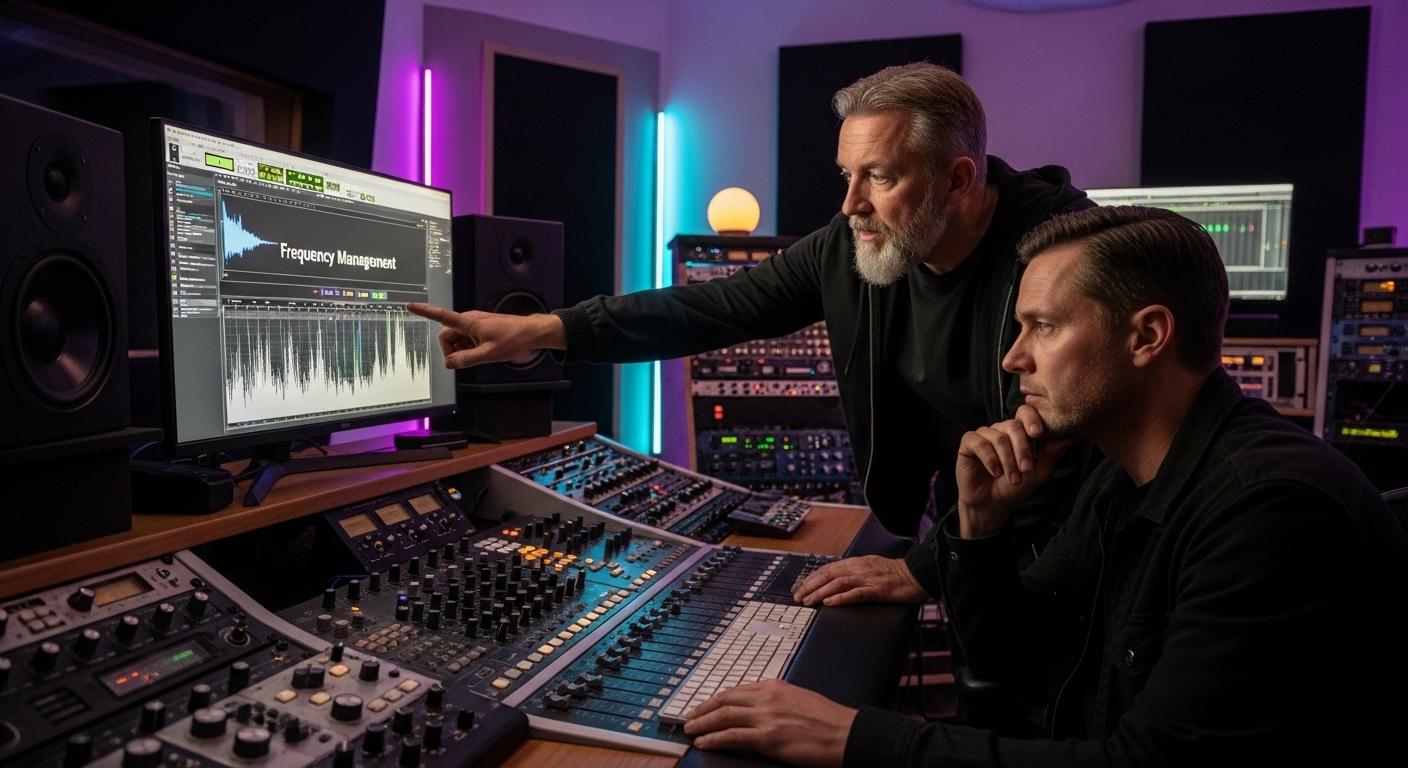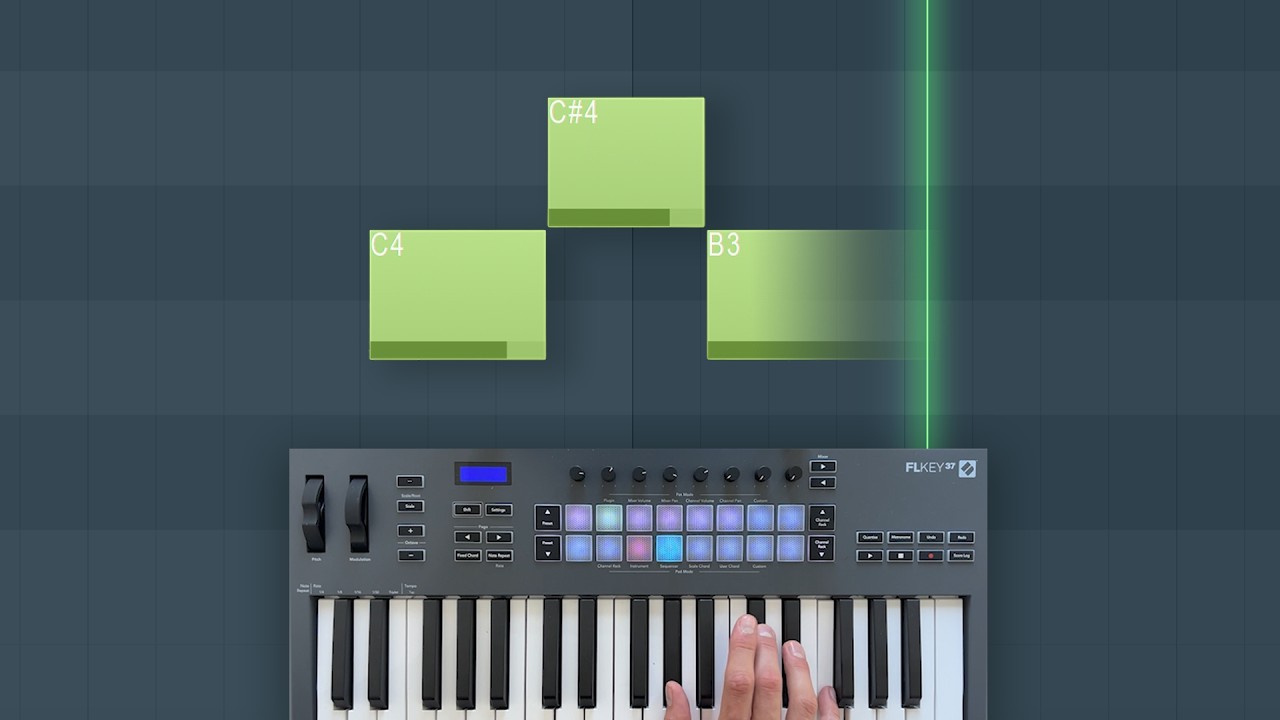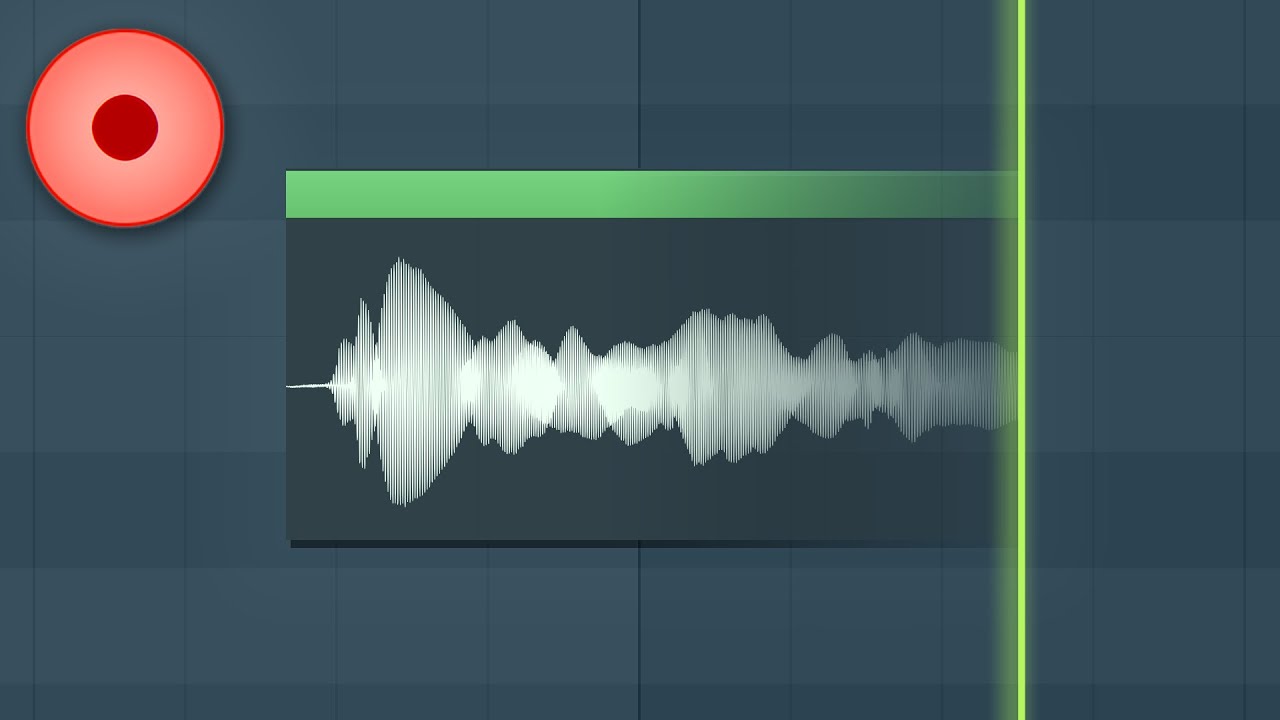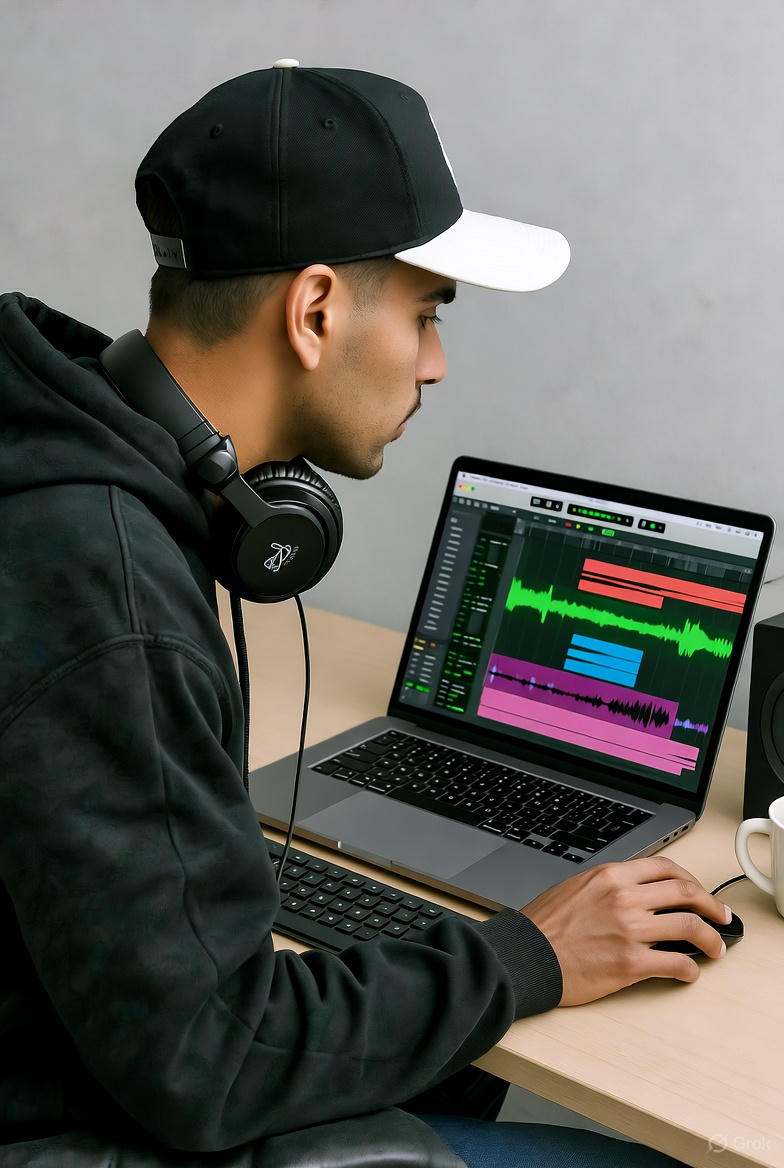!Let Us HELP YOU!
We have a lot of curated content on this blog.
Take this simple 20 second Quiz to Help You
Find The Exact Content You Are Looking For!
Mixing beats decides whether a track sounds amateur or professional and it is the process that stands between a rough demo and a song that truly moves people. So many believe it is just about balancing levels or adding effects. But the real surprise is that strategic beat mixing can increase listener engagement by up to 40 percent according to professional audio engineering research. That edge is what separates forgettable songs from hits people feel in their bones.
Table of Contents
Quick Summary
| Takeaway | Explanation |
| Master sound balance for clarity | Adjusting volumes of instruments enhances clarity and engagement in music. |
| Control dynamics for emotional impact | Using techniques like compression elevates the emotional depth of music tracks. |
| Utilize audio effects strategically | Effects like reverb and delay enrich sound and shape listener perception. |
| Adapt mixing techniques per genre | Different genres require tailored mixing strategies to meet unique sonic and emotional needs. |
| Understand rhythm and melody interconnection | Recognizing their relationship helps create more captivating musical compositions. |
What is Mixing Beats and Why It Matters
Mixing beats represents the intricate art of blending individual sound elements to create a cohesive, professional musical composition. It transforms raw audio tracks into polished, balanced soundscapes that capture listeners’ attention and convey emotional depth. At its core, mixing beats involves manipulating volume, frequency, stereo placement, and dynamics of various sound components to produce a harmonious final product.
To help clarify the different components that make up expert beat mixing, the table below organizes key elements alongside their primary role in the process.
| Component | Description |
| Sound Balance | Adjusts relative volumes of instrumental and vocal tracks |
| Frequency Management | Prevents sonic conflicts between different sound elements |
| Stereo Imaging | Positions sounds across left and right audio channels |
| Dynamic Range Control | Manages differences between the loudest and softest elements |
| Harmonic Balance | Maintains consistent tonal relationships |
| Spectral Clarity | Prevents frequency masking for improved mix definition |
The Essential Components of Beat Mixing
Successful beat mixing requires understanding several fundamental elements:
-
Sound Balance: Adjusting relative volumes of different instrumental and vocal tracks
-
Frequency Management: Preventing sonic conflicts between different sound elements
-
Stereo Imaging: Strategically positioning sounds across the left and right audio channels
-
Dynamic Range Control: Managing the difference between loudest and softest parts of the track
Producers who master these components can create beats that sound professional and emotionally engaging. Learn more about advanced mixing techniques to elevate your music production skills.
Why Professional Mixing Matters
Professional mixing transforms mediocre recordings into exceptional musical experiences. Without proper mixing, even talented musicians can sound amateurish. According to professional audio engineering research, well-mixed tracks demonstrate:
-
Clarity of individual instruments
-
Balanced frequency response
-
Consistent emotional energy
-
Enhanced listener engagement
By understanding and applying sophisticated mixing techniques, producers can create beats that resonate deeply with audiences across various musical genres.
The Role of Rhythm and Melody in Beat Mixing
Rhythm and melody are the foundational pillars that transform basic sound into compelling musical experiences. While rhythm provides the structural backbone, melody delivers emotional context, creating intricate sonic landscapes that resonate with listeners. Understanding their intricate relationship is crucial for producers seeking to craft exceptional beats.
The following table compares how rhythm and melody function in beat mixing and their influence on the emotional and structural qualities of music.
| Aspect | Role in Beat Mixing | Impact on Music |
| Rhythm | Provides structure and temporal framework | Drives energy and movement |
| Melody | Adds emotional context and guides storytelling | Evokes feelings and memorability |
| Interaction | Melodic phrasing aligns with rhythmic patterns | Creates engaging musical textures |
| Production Focus | Adjusting tempo, groove, and percussion placement | Layering harmonious, tonal elements |
Rhythm: The Heartbeat of Musical Expression
Rhythm serves as the fundamental pulse driving musical composition. It establishes the temporal framework through which all other musical elements flow. Producers manipulate rhythmic patterns by adjusting:
-
Tempo: The speed and pace of musical progression
-
Groove: The underlying feel and momentum of the beat
-
Syncopation: Strategic disruptions in expected rhythmic patterns
-
Percussion Placement: Precise positioning of drum and percussive elements
Explore advanced beat-making techniques to enhance your rhythmic understanding and creative potential.
Melody: Emotional Storytelling Through Sound
Melody transforms rhythmic structures into emotionally resonant experiences. According to scientific research on musical perception, melodic elements interact with rhythmic foundations to create complex psychological responses in listeners. Effective melody development involves:
-
Harmonic Progression: Creating coherent musical narratives
-
Tonal Variation: Introducing dynamic pitch changes
-
Emotional Contour: Crafting sonic journeys that evoke specific feelings
-
Instrumental Layering: Blending different sound textures
By understanding how rhythm and melody interplay, producers can create beats that not only sound professional but also tell compelling musical stories.
Key Elements of a Balanced Mix: Frequencies and Dynamics
Creating a balanced mix requires precise understanding and manipulation of two critical audio elements: frequencies and dynamics. These foundational components determine the clarity, depth, and emotional impact of a musical composition.
WEBSITE RESOURCES FOR MUSICIANS
 Producers must skillfully navigate these sonic territories to transform raw recordings into professional soundscapes.
Producers must skillfully navigate these sonic territories to transform raw recordings into professional soundscapes.
Understanding Frequency Management
Frequency management involves strategically controlling the range of sounds within a mix.
Each instrument and vocal track occupies specific frequency ranges, and effective mixing prevents sonic clutter by ensuring these ranges complement rather than compete with each other. Producers accomplish this through:
![]()
-
Equalization (EQ): Sculpting individual sound frequencies
-
Frequency Separation: Creating distinct sonic spaces for different elements
-
Harmonic Balance: Maintaining consistent tonal relationships
-
Spectral Clarity: Preventing frequency masking between instruments
Discover advanced equalization techniques to refine your mixing skills and achieve professional sound quality.
Dynamics: The Breath of Musical Expression
Dynamics control the volume and intensity variations within a mix. According to professional audio engineering research, effective dynamic management transforms a flat recording into a vibrant, emotionally engaging experience. Key dynamic control strategies include:
-
Compression: Evening out volume inconsistencies
-
Transient Shaping: Defining attack and decay of sound elements
-
Gain Staging: Maintaining optimal signal levels
-
Dynamic Range Preservation: Retaining musical expressiveness
Mastering these frequency and dynamic techniques empowers producers to craft mixes that sound professional, immersive, and emotionally resonant across various listening environments.
Understanding Effects and Their Impact on Beats
Audio effects represent powerful tools that transform raw sound into complex, emotionally resonant musical experiences. These sonic manipulators allow producers to create unique textures, expand creative boundaries, and inject personality into their beats. Understanding and strategically applying effects can elevate a basic track into a compelling musical narrative.
Essential Audio Effects for Beat Production
Producers utilize a wide range of effects to shape and enhance their musical compositions. Each effect serves a distinct purpose in sculpting sound and creating depth. Critical effects include:
-
Reverb: Adding spatial dimension and atmospheric depth
-
Delay: Creating rhythmic echoes and sound complexity
-
Distortion: Introducing grit and aggressive tonal characteristics
-
Compression: Evening out dynamic variations
-
Chorus: Generating width and richness in sound
Explore advanced beat-making techniques to unlock creative potential with audio effects.
The Psychological Impact of Sound Effects
According to sound design research, effects do more than modify sound they fundamentally alter listener perception and emotional response. Each effect acts as a psychological trigger, evoking specific feelings and memories. Strategic effect application allows producers to:
-
Create Emotional Landscapes: Construct sonic environments
-
Guide Listener Attention: Emphasize critical musical moments
-
Generate Tension and Release: Develop narrative arcs within tracks
-
Establish Genre Identity: Craft distinctive sonic signatures
Mastering audio effects transforms beat production from technical execution to genuine artistic expression.
The Creative Process: Mixing Beats in Different Genres
Mixing beats across various musical genres demands a nuanced understanding of each style’s unique sonic characteristics and emotional landscapes. Producers must adapt their technical skills and creative intuition to honor the distinct musical language of each genre while maintaining professional sound quality. The approach to mixing becomes a delicate balance between technical precision and artistic expression.
Genre Specific Mixing Strategies
Each musical genre presents its own set of mixing challenges and aesthetic expectations. Successful producers develop genre specific techniques that respect traditional sound while introducing innovative approaches. Key considerations include:
-
Frequency Distribution: Tailoring sound balance to genre expectations
-
Dynamic Range: Adjusting compression and intensity levels
-
Stereo Imaging: Creating spatial depth appropriate to the genre
-
Instrumental Emphasis: Highlighting characteristic instruments
-
Emotional Tone: Preserving the genre’s inherent musical mood
Explore pop beat production techniques to understand genre specific mixing approaches.
The Sonic Palette of Musical Styles
According to ethnomusicological research, musical genres represent complex cultural expressions that extend beyond mere sonic characteristics. Mixing becomes an art of cultural translation, where producers must:
-
Understand Cultural Context: Respect musical traditions
-
Interpret Sonic Traditions: Recognize genre specific sound signatures
-
Innovate Within Boundaries: Push genre limits while maintaining authenticity
-
Communicate Emotional Narratives: Translate cultural experiences through sound
The creative process of mixing beats transcends technical skill, becoming a profound act of musical storytelling across diverse cultural landscapes.
Ready to Transform Your Beat Mixing Skills Into Professional Sound?
You just explored the essential elements of beat mixing, from frequency management to mastering dynamics and creative effects. If you have ever felt overwhelmed by layering melodies and rhythms, or struggled to achieve clarity in your mixes, you are not alone. Many producers face challenges like muddy frequencies, lack of emotional impact, or uncertainty about the right gear and software for each genre. Powerful solutions are right at your fingertips.
Take action today and start perfecting your mixes with our step-by-step tutorials on FL Studio production and discover trusted gear reviews including the best equalizers for 2025. For producers who want to combine creativity with professional standards, the full range of resources at How to Make Beats will guide you in making music that truly stands out. Visit now and get the hands-on advice you need to elevate your sound to the next level.
Frequently Asked Questions
What is the importance of mixing beats in music production?
Mixing beats is crucial because it transforms raw audio tracks into polished, balanced soundscapes. Proper mixing enhances clarity, emotional energy, and listener engagement, making the final product sound professional and well-crafted.
What key components should I focus on when mixing beats?
Focus on essential components such as sound balance, frequency management, stereo imaging, and dynamic range control. Mastering these elements will help you create a cohesive and professional-sounding track.
How do rhythm and melody influence the mixing process?
Rhythm provides the structural backbone of a track, while melody adds emotional depth. Understanding their interplay helps producers craft beats that resonate with audiences and tell compelling musical stories.
What are some common audio effects used in beat mixing?
Common audio effects include reverb, delay, distortion, compression, and chorus. These effects enhance sound quality and can evoke specific emotional responses, shaping the overall listening experience.



